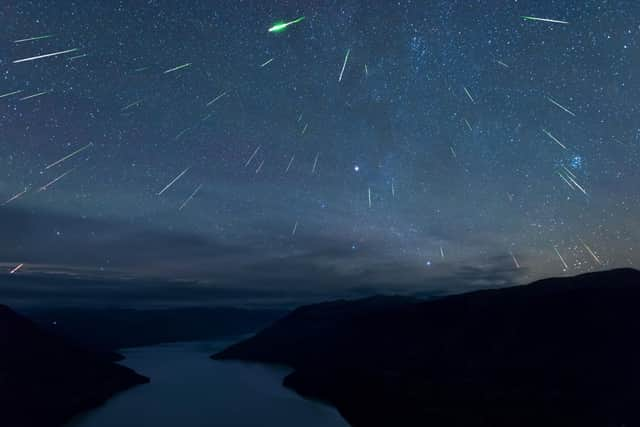Draconid Meteor Shower 2022: When does October's meteor shower peak, where do the meteors come from, and how to see the shooting stars in Scotland?
Every October the Draconid meteor shower – also known as the Giacobinids – sees hundreds of meteors generated by a passing comet burn up in Earth’s atmosphere every hour.
Some years produce more spectacular shows than others – with 1933 and 1946 seeing thousands of shooting stars light up the night sky.
Advertisement
Hide AdAdvertisement
Hide AdAnd we’re perfectly placed in Scotland to see the show, as it’s most visible from the Northern Hemisphere.
Here’s everything you need to know about the Draconid, and how to watch them.
What is a meteor shower?
Meteors are created when a meteoroid (small space rock) enters the Earth’s upper atmosphere, which causes it to quickly heat up due to friction from the air.
This heat causes the gases around the rock to glow brightly, causing it to become a meteor which can be seen from Earth.


When a number are seen within a short period of time it is classed as a meteor shower.
The vast majority of meteors burn up completely in the Earth’s atmosphere and are no bigger than a grain of rice.
Occasionally far larger meteoroid enter the atmosphere – usually huge pieces of rock that have broken off a steroid – and land on the surface of the Earth.
These are called meteorites and the largest ever recorded is called Hoba, weighing in at a hefty 60 tonnes.
Advertisement
Hide AdAdvertisement
Hide AdIt is thought to have landed in Namibia around 80,000 years ago, and can still be seen in the exact spot it landed all those years ago.
When do the Draconids peak?
This year the Draconoids last from October 6-10.
They will be at their peak in Scotland on Saturday, October 8, and Sunday, October 9 – which is when you are most likely to see multiple shooting stars.
How did the Draconids get their name?
The meteors appear to travel from a point near the head of constellation Draco the Dragon, which is visible all year in the Northern Hemisphere – and this pattern of stars also lends its name to the meteor shower.
Where do the meteors come from?
The Draconid meteors are caused when Earth collides with debris ejected from comet 21P/Giacobini-Zinner (hence the alternative name of the Giacobinids).
The comet has a 6½-year-long orbit around the sun that periodically carries it near Jupiter and a particularly large amount of particles was created in 1900.
When the Earth passes through this stream of celestial rubbish on its own orbit around the sun, the meteor shower is created.
What’s the best way to watch the Draconids in Scotland?
There are two main things you need to watch a meteor show – patience and clear skies.
Currently the weather forecast for much of Scotland over the peak of the shower is less than positive, but things may change.
Advertisement
Hide AdAdvertisement
Hide AdIf there are clear skies then wrap up warm, find a location with minimal light pollution and use a sky map to find the Draco the Dragon constellation, where the meteors will appear to emerge from.
The best time to see meteors is just after midnight until just before sunrise.
Make sure you get to your destination in plenty of time – it takes your eyes around 30 minutes to adjust to the dark – get comfy, look to the skies, and wait.
Read more:
Comments
Want to join the conversation? Please or to comment on this article.